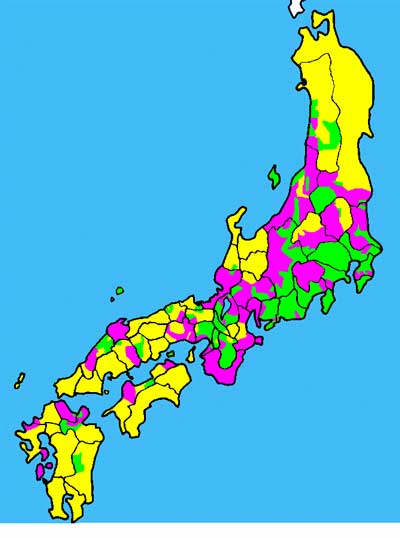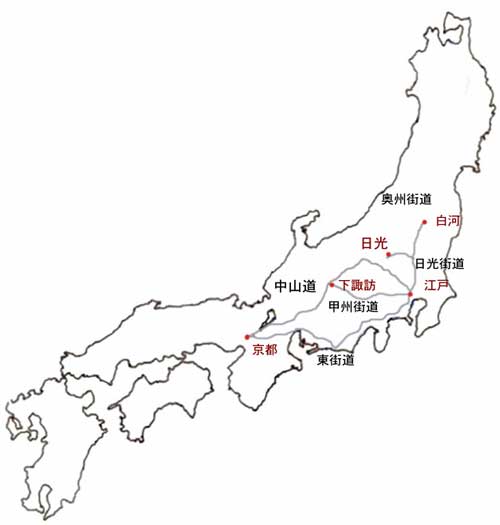
|
Title |
五街道 |
|
Unit/Activity No. |
Tokaido Unit 2/Activity 1 |
|
Topic |
Geography and people, travel, transportation |
|
Function |
Identify things, extracting details |
|
Focus |
Identify the routes and major cities along Gokaido |
I. BACKGROUND INFORMATION FOR TEACHERS
Teacher Instructions
Teacher Presentation Sample Scripts
Script 1
これは今の日本の地図です。この線は何だと思いますか。(Students: ハイウェイ?電車?)電車です。電車の線を路線といいます。この地図は全部の路線ではなくて、大きな路線だけです。小さい路線は書いてありません。この赤くて太い線は何だと思いますか。(Students: 新幹線?)そう、新幹線です。
Script 2
ここに何にも線が書いてない地図があります。江戸時代の道はどうだったか考えて、線を書いてみてください。(Have students draw lines on their handout. Have a couple of students draw lines on Transparency 3 and show them to the class.) Ask each of the students: どうしてこういうふうに書きましたか。
Script 3
これが江戸時代の道路の様子です。このように、ひとつ、ふたつ、みっつ、よっつ、いつつの大きな道がありました。五つあるので、五街道と言います。江戸はどこですか。(Have a student point to Edo on the map.) (Point to Kyoto) ここはどこですか。(Students: 京都?)そうですね。
Script 4
この地図を覚えていますか。誰かこの地図を説明できますか。(Have a volunteer student describe the map. Student: これは三つのタイプの領を表します。緑は幕府の領、紫は親藩、譜代大名の領、黄色は外様大名の領です。) そうですね。(Place Transparency 3 over Transparency 4.) どうですか。どんなことがわかりますか。(Have a volunteer student share his idea: 幕府の土地に五つの大きな道があります。) そうですね。
Answer Key to Student Activities
Handout 2
|
1. |
1) c |
2) c |
3) a |
4) d |
5) b |
2.

|
2. |
1) a |
2) e |
3) d |
4) c |
5) a or e |
4.
|
|
読み |
意味 |
|
例. 街道 |
かいどう |
highway, road |
|
1) 五街道 |
ごかいどう |
the five highways |
|
2) 主要な |
しゅような |
major |
|
3) 都市 |
とし |
city |
|
4) 太平洋 |
たいへいよう |
the Pacific Ocean |
|
5) 内陸 |
ないりく |
inland |
|
6) AとBをつなぐ |
|
connect A and B |
|
7) 〜にそう |
|
runs along ~ |
|
8) 〜と呼ばれる |
〜とよばれる |
is called ~ |
|
9) 出入り口 |
でいりぐち |
gateway |
Suggestions
Prior to teaching this unit, review the eight regions of Japan (東北、関東、北陸、中部、近畿、中国、四国、九州) if necessary.
If there is not enough time to complete Activity 4 on Handout 2, it can be assigned as homework.
II. STUDENT ACTIVITY HANDOUTS
Handout 1
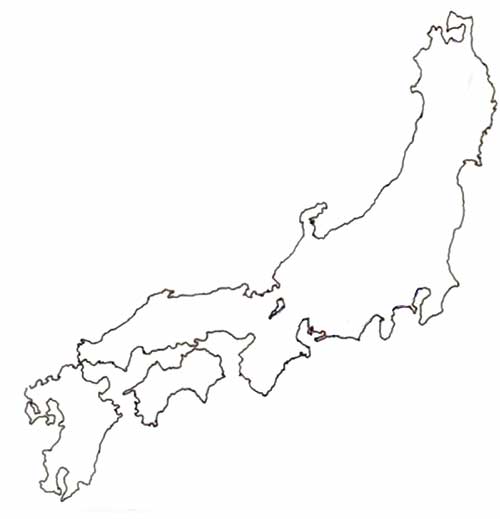
Handout 2
次の文を読んで、質問に答えてください。
五街道(ごかいどう)
江戸時代には、いろいろな街道1ができました。中でも、五街道といわれる道は、主要2な都市3をつないでいました。江戸から京都へ行く、太平洋(たいへいよう)にそった街道は東海道(とうかいどう)と呼ばれています。中山道(なかせんどう)も東海道と同じく京都へ行きますが、内陸4にあります。甲州街道(こうしゅうかいどう)は江戸から甲府(こうふ)(山梨県(やまなしけん))の下諏訪(しもすわ)へ行きます。日光街道(にっこうかいどう)は、徳川家康(とくがわいえやす)の作ったお寺がある日光への道です。奥州街道(おうしゅうかいどう)は東北地方(とうほくちほう)への出入り口5で、白河(しらかわ)へ行きます。
1. 次の( )に下から地名を選んで、記号で答えてください。
1) 東海道は江戸から( )へ行く太平洋にそった街道です。
2) 中山道は江戸から( )へ行く内陸の街道です。
3) 甲州街道は江戸から( )へ行く街道です。
4) 日光街道は江戸から( )へ行く街道です。
5) 奥州街道は江戸から( )へ行く街道です。
|
a. 下諏訪 |
b. 白河 |
c. 京都 |
d. 日光 |
<Useful Vocabulary>
|
1 |
かいどう |
2 |
しゅよう |
3 |
とし |
|
4 |
ないりく |
5 |
でいりぐち |
|
|
2. 下の地図に五街道を書き入れてみましょう。
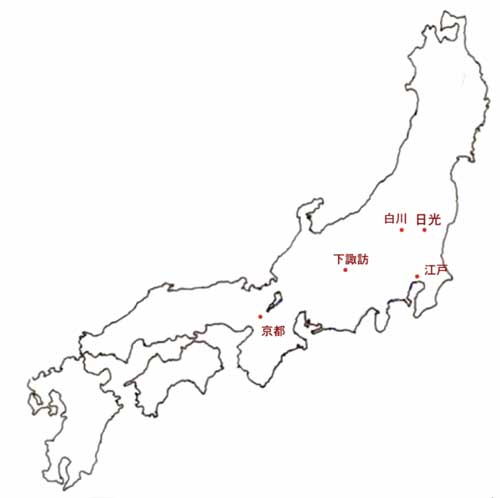
3. 次の文は、どの街道について説明していますか。下から街道を選んで記号で答えてください。
1) 五街道の中で一番短い街道です。___
2) 江戸から東北地方に行く時に使う道です。___
3) 山地を通って京都へ行きます。___
4) 海が見えます。___
5) 江戸から今の新潟県(にいがたけん)に行く時に通る道です。___
a. 日光街道 b. 甲州街道 c. 東海道 d. 中山道 e. 奥州街道
4. 次の言葉の読み方を書いてください。そして、その意味を推測してください。
|
|
読み |
意味 |
|
例. 街道 |
かいどう |
Highway, road |
|
1) 五街道 |
|
|
|
2) 主要な |
|
|
|
3) 都市 |
|
|
|
4) 太平洋 |
|
|
|
5) 内陸 |
|
|
|
6) AとBをつなぐ |
|
|
|
7) 〜にそう |
|
|
|
8) 〜と呼ばれる |
|
|
|
9) 出入り口 |
|
|
III. VISUAL AIDS FOR TEACHERS
Transparency 1

Transparency 2
For this visual aid, make a transparency of Handout 1.
Transparency 3
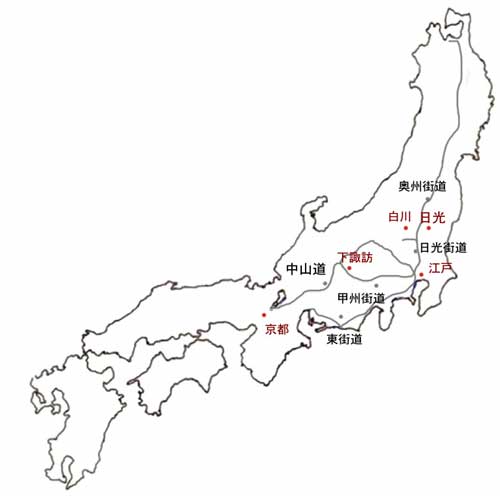
Transparency 4
